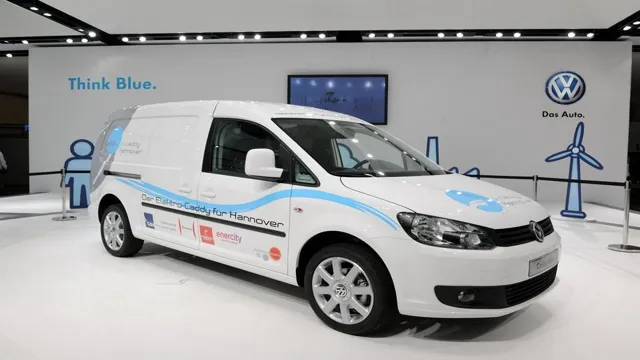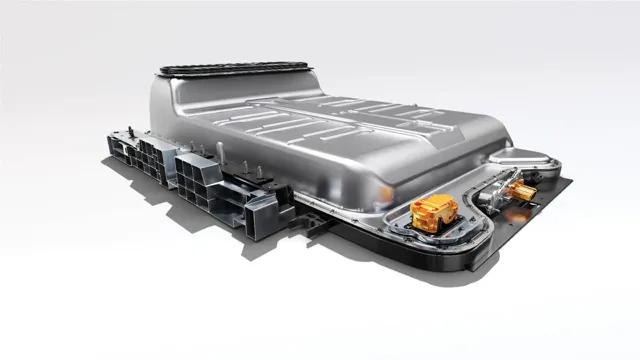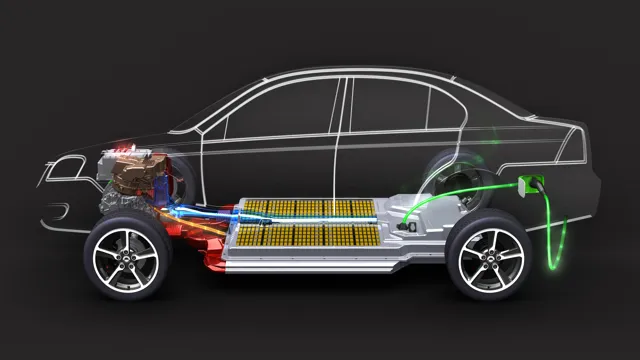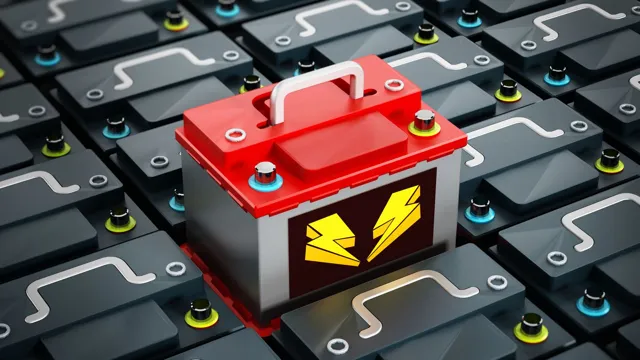Rev Up Your Golf Game: Unlock the Power of Electric Caddy Car Batteries
Electric caddy cars have surged in popularity in recent years, and it’s no surprise why. These convenient vehicles provide a comfortable and eco-friendly way to travel short distances, like on a golf course or in a retirement community. However, like any battery-operated device, caddy cars require proper maintenance to ensure they are running efficiently.
That starts with investing in a high-quality electric caddy car battery. Electric caddy car batteries come in a range of sizes and types, so it’s essential to pick the right one for your vehicle. Not only does the battery need to provide enough power to keep the car going, but it should also have a long lifespan and be durable enough to withstand frequent use.
With so many options on the market, it can be overwhelming to choose the best one, but we’ve got you covered. In this blog post, we will explore everything you need to know about electric caddy car batteries, including how they work, how to maintain them, and which ones are the best for your needs.
Types of Electric Caddy Car Batteries
When it comes to electric caddy cars, the type of battery used is crucial. There are various types of electric caddy car batteries, including lead-acid, lithium-ion, and nickel-metal hydride batteries. Lead-acid batteries are the traditional option and are known for being affordable and reliable.
They are also suitable for short trips on flat terrain. Lithium-ion batteries are lightweight and efficient, making them the go-to choice for long-distance trips and hilly areas. These batteries are also known for their quick charging time and long lifespan.
Lastly, nickel-metal hydride batteries are a middle ground between lead-acid and lithium-ion batteries. They are known for being reliable and lightweight while being less expensive than lithium-ion batteries. When choosing which battery to use for an electric caddy car, it’s important to consider factors such as cost, distance, terrain, and charging time to ensure that the battery fits your needs.
Lead Acid Batteries
When it comes to electric caddy cars, one of the biggest considerations is what type of battery to use. One popular option is lead acid batteries, which are known for their affordability and reliability. These batteries come in two main types: flooded lead acid and sealed lead acid.
Flooded lead acid batteries require regular maintenance, including adding distilled water and checking the electrolyte levels. Sealed lead acid batteries, on the other hand, are maintenance-free and do not require any additional water. Both types of lead acid batteries have their pros and cons, so it’s important to weigh the options and choose the one that best fits your needs and budget.
When it comes to maintaining electric caddy car batteries, it’s important to make sure they are charged regularly and kept clean and dry to prolong their lifespan. By taking proper care of the battery, you can ensure that your electric caddy car will continue to run smoothly for years to come.
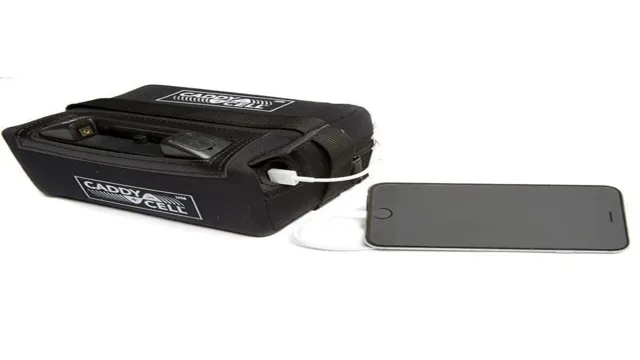
Lithium-Ion Batteries
Lithium-ion batteries are the most commonly used batteries in electric caddy cars due to their high energy density and longer lifespan. They come in different types, including cylindrical, prismatic, and pouch, each with its own unique features. Cylindrical batteries are commonly found in laptops due to their high energy density and good thermal stability, while prismatic batteries are commonly used in electric cars due to their flat shape and easy-to-stack design.
Pouch batteries, on the other hand, are thin and flexible, making them ideal for use in small, portable devices. Regardless of the type, lithium-ion batteries are known for their long-lasting power and fast charging times, making them the perfect choice for electric caddy cars. So if you’re in the market for an electric caddy car, make sure to check out the type of lithium-ion battery it uses to ensure you get the best performance and lifespan out of your vehicle.
Factors to Consider When Choosing a Battery
When it comes to choosing batteries for your electric caddy car, there are several factors to consider. Firstly, you need to check the voltage and ampere rating of the battery to ensure it matches your car’s requirements. The battery’s run time and charging time should also be taken into account, depending on how frequently you use your caddy car.
The battery’s weight and size are critical factors to consider as well, as they will affect the performance and maneuverability of your vehicle. Additionally, you need to choose between lithium-ion, lead-acid, or gel batteries based on your preferences and your budget. Lastly, it is crucial to purchase from a reliable brand that offers warranties and good customer support.
With these factors considered, you can select the right battery for your electric caddy car, ensuring optimal performance and a seamless driving experience.
Capacity and Voltage
When it comes to choosing a battery, two important factors to consider are capacity and voltage. Capacity refers to the amount of energy the battery can store, measured in milliampere-hours (mAh). The higher the capacity, the longer the battery will last between charges.
Voltage, on the other hand, refers to the electrical potential of the battery, measured in volts (V). Different devices require different voltages to operate, so it’s important to ensure that the battery you choose has the appropriate voltage for your device. Depending on your needs, you may prioritize one factor over the other.
For example, if you need a battery for a device that requires high voltage, you may have to sacrifice some capacity in order to meet the voltage requirement. It’s all about finding the right balance based on your specific needs.
Size and Weight
When choosing a battery, one of the essential factors to consider is its size and weight. It’s important to select a battery that will last long enough to stay functional while also being lightweight enough to not weigh you down. For example, if you are looking for a battery for your laptop or smartphone, it’s better to choose a small and lightweight battery that can easily fit in your pocket or bag.
On the other hand, if you are looking for a battery for your car or RV, a more substantial and powerful battery is required to reliably power all your equipment. It’s important to remember that the size and weight of a battery will affect its performance and portability, so it’s essential to strike a balance between these two factors when making a decision. Overall, choosing the right size and weight for your battery is crucial in ensuring your device stays powered and portable.
Cost and Maintenance
When choosing a battery, cost and maintenance are important factors to consider. While cheaper batteries may seem like a good option at first, they often have a shorter lifespan and require more frequent maintenance. Opting for a more expensive, high-quality battery can actually save money in the long run since it will last longer and require less maintenance.
Another factor to keep in mind is the type of battery and its specific maintenance requirements. Some batteries require regular watering or charging, while others are maintenance-free. It’s important to choose a battery that matches your needs and fits within your budget.
By considering factors such as cost and maintenance, you can ensure that your battery will provide reliable and long-lasting power for your needs. So, if you want a battery that won’t constantly need attention and will save you money in the long run, invest in a high-quality option.
Benefits of Switching to Electric Caddy Car Batteries
Switching to electric caddy car batteries offers numerous benefits, both financially and environmentally. First and foremost, electric caddy car batteries are much cheaper to maintain and operate compared to traditional gas-powered batteries. They require less maintenance and have a longer lifespan, reducing the need for frequent replacements.
Additionally, they produce zero emissions, making them an eco-friendly alternative that’s better for the planet. Electric caddy car batteries are also much quieter and offer a smoother ride, ensuring a tranquil golfing experience for all players. Switching to electric caddy car batteries is a no-brainer, offering a more cost-effective and eco-friendly alternative to traditional batteries.
Reduced Emissions
Switching to electric caddy car batteries has numerous benefits, and one of them is reduced emissions. Unlike traditional gasoline-powered golf carts, electric caddy cars run on battery power, which means they emit no harmful gases or pollutants into the environment. This not only helps to reduce air pollution, but it also makes for a more pleasant and comfortable ride for golfers.
Electric caddy cars are also quieter than their gas-powered counterparts, which further contributes to a more peaceful and enjoyable golfing experience. So not only can you reduce your carbon footprint by switching to electric caddy car batteries, but you can also enjoy a more relaxing and eco-friendly round of golf.
Cost Savings
Cost Savings Switching to electric caddy car batteries is a smart move that could save you money in the long run. These batteries are more cost-efficient than traditional gasoline-powered vehicles. You will see savings on fuel costs since electricity prices are typically lower than gasoline prices.
Beyond that, electric cars have fewer parts to maintain, and they require less frequent maintenance. You won’t have to worry about changing oil and replacing belts, which can add up over time. Moreover, electric vehicles have a longer lifespan than gasoline-powered ones, so you won’t have to replace them as often.
By making the switch to electric caddy car batteries, you’ll reduce your environmental impact and save money on fuel and maintenance costs.
Maintenance Tips for Electric Caddy Car Batteries
Electric caddy car batteries are an essential component of your golf cart, and therefore, they need to be well-maintained to ensure optimal performance and lifespan. Firstly, it is crucial to charge your battery regularly and fully before using it. This helps to prevent sulfation – a common cause of battery failure.
Additionally, it is recommended to avoid frequent deep discharges as this can damage the battery. Instead, charge the battery after each use or after every few rounds of golf. Always ensure that the battery is properly secured within the cart and that its terminals are clean and free of corrosion.
If you plan on storing your golf cart during the offseason, it is essential to charge the battery fully and disconnect it to prevent slow discharge. By following these maintenance tips, you can extend the life of your electric caddy car battery and enjoy reliable performance season after season.
Conclusion
To sum it up, electric caddy car batteries are like the high-performance athletes of the golf course. They power our rides up and down hills and through sand traps with ease, but like any athlete, they require proper care and conditioning to maintain their top performance. So, the next time you hit the links and climb aboard your trusty caddy car, remember to give your battery some TLC for a round that’s sure to end below par.
“
FAQs
What are the different types of batteries used in electric caddy cars?
The most common types of batteries used in electric caddy cars are lead-acid batteries, lithium-ion batteries, and nickel-metal hydride batteries.
How long do electric caddy car batteries last?
The lifespan of electric caddy car batteries varies depending on the type of battery, usage, and charging patterns. On average, lead-acid batteries last between 3-5 years, while lithium-ion batteries can last up to 10 years.
Can electric caddy car batteries be recharged while playing on the course?
Most electric caddy car batteries can be recharged while playing on the course using a compatible charger. It’s important to consult the manufacturer’s instructions to ensure proper charging protocols are followed.
What is the average cost of replacing electric caddy car batteries?
The cost of replacing electric caddy car batteries varies depending on the type of battery and the manufacturer. On average, replacement lead-acid batteries can range from $150-$300, while lithium-ion batteries can range from $600-$1200.
